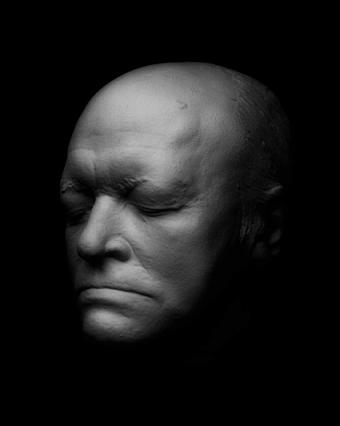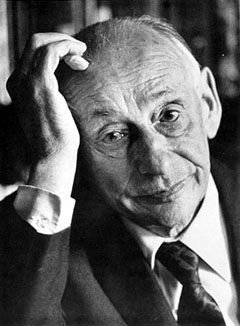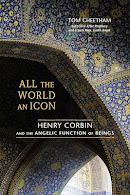"...the Imagination (or love, or sympathy, or any other sentiment) induces knowledge, and knowledge of an 'object' which is proper to it..."
Henry Corbin (1903-1978) was a scholar, philosopher and theologian. He was a champion of the transformative power of the Imagination and of the transcendent reality of the individual in a world threatened by totalitarianisms of all kinds. One of the 20th century’s most prolific scholars of Islamic mysticism, Corbin was Professor of Islam & Islamic Philosophy at the Sorbonne in Paris and at the University of Teheran. He was a major figure at the Eranos Conferences in Switzerland. He introduced the concept of the mundus imaginalis into contemporary thought. His work has provided a foundation for archetypal psychology as developed by James Hillman and influenced countless poets and artists worldwide. But Corbin’s central project was to provide a framework for understanding the unity of the religions of the Book: Judaism, Christianity and Islam. His great work Alone with the Alone: Creative Imagination in the Sufism of Ibn ‘Arabi is a classic initiatory text of visionary spirituality that transcends the tragic divisions among the three great monotheisms. Corbin’s life was devoted to the struggle to free the religious imagination from fundamentalisms of every kind. His work marks a watershed in our understanding of the religions of the West and makes a profound contribution to the study of the place of the imagination in human life.Search The Legacy of Henry Corbin: Over 800 Posts
Thursday, June 28, 2012
Tuesday, June 26, 2012
On Corbin & Interreligious Dialogue
Some reflections on existence and imagination in relation to interreligious dialogue and intercultural philosophy of religion
VIA University College, Department of Teacher Education, Aarhus, Denmark
Islam and Christian–Muslim Relations (2012), 23:3, 257-266
in various ways to notions of imagination in some parts of the Muslim philosophical tradition. The fourth part of the article returns to the issue of how to conceive of what it means to be individual and the relation between the individual, communal reality and ontology.
(Thanks to Daniel Proulx for this.)
Monday, June 25, 2012
The New Eye
by Erik Davis
(references to Corbun & mundus imaginalis)
(thanks to Felix King for this)
Friday, June 22, 2012
Rexroth & Corbin
Suchness
In the theosophy of light,
The logical universal
Ceases to be anything more
Than the dead body of an angel.
What is substance? Our substance
Is whatever we feed our angel.
The perfect incense for worship
Is camphor, whose flames leave no ashes.
from Love is an Art of Time (1974)
in The Complete Poems of Kenneth Rexroth, 702
"In [Suhrawardi’s] theosophy of Light, the entire Platonic theory of Ideas is interpreted in terms of Zoroastrian angelology.… What Aristotelianism considers as the concept of a species, the logical universal, ceases to be anything more than the dead body of an Angel." - Corbin, Creative Imagination, 22. In English, 1969.
Rexroth Reading with music from Rexroth & Barecelona by the Bay
In the theosophy of light,
The logical universal
Ceases to be anything more
Than the dead body of an angel.
What is substance? Our substance
Is whatever we feed our angel.
The perfect incense for worship
Is camphor, whose flames leave no ashes.
from Love is an Art of Time (1974)
in The Complete Poems of Kenneth Rexroth, 702
"In [Suhrawardi’s] theosophy of Light, the entire Platonic theory of Ideas is interpreted in terms of Zoroastrian angelology.… What Aristotelianism considers as the concept of a species, the logical universal, ceases to be anything more than the dead body of an Angel." - Corbin, Creative Imagination, 22. In English, 1969.
Rexroth Reading with music from Rexroth & Barecelona by the Bay
Wednesday, June 20, 2012
Friday, June 15, 2012
Blake & the Visionary Recital
Peter O'Leary discusses William Blake and Henry Corbin in
at The Cultural Society
William Blake -
photo of a life mask made in 1823
Joanna Kane from Somnambulists
Thursday, June 14, 2012
"The recovery of occulted meaning"
Regular readers will recall this earlier post on Corbin, Robert Duncan and H.D. I strongly recommend the interview with Michael Boughn, co-editor of The HD Book on, Cross-Cultural Poetics Episode 234, that can be had via mp3 here.
Monday, June 11, 2012
Suhrawardi, Walbridge, Azal
Sunday, June 10, 2012
L'Herne - Henry Corbin
Publiés à L'Herne :
Cahier Henry Corbin
Le Paradoxe du Monothéisme (Essais)
Le Livre des sept Statues (Essais)
Friday, June 8, 2012
En Islam Iranien
Henry Corbin présente en 1973 son entreprise monumentale, En islam iranien, aujourd'hui disponible en quatre tomes au format poche, dans la collection Tel de Gallimard.
Thursday, June 7, 2012
Martha Nussbaum on Religious Intolerance
Overcoming the Politics of Fear in an Anxious Age
from the publisher: "What impulse prompted some newspapers to attribute the murder of 77 Norwegians to Islamic extremists, until it became evident that a right-wing Norwegian terrorist was the perpetrator? Why did Switzerland, a country of four minarets, vote to ban those structures? How did a proposed Muslim cultural center in lower Manhattan ignite a fevered political debate across the United States? In The New Religious Intolerance, Martha C. Nussbaum surveys such developments and identifies the fear behind these reactions. Drawing inspiration from philosophy, history, and literature, she suggests a route past this limiting response and toward a more equitable, imaginative, and free society.
Fear, Nussbaum writes, is “more narcissistic than other emotions.” Legitimate anxieties become distorted and displaced, driving laws and policies biased against those different from us. Overcoming intolerance requires consistent application of universal principles of respect for conscience. Just as important, it requires greater understanding. Nussbaum challenges us to embrace freedom of religious observance for all, extending to others what we demand for ourselves. She encourages us to expand our capacity for empathetic imagination by cultivating our curiosity, seeking friendship across religious lines, and establishing a consistent ethic of decency and civility. With this greater understanding and respect, Nussbaum argues, we can rise above the politics of fear and toward a more open and inclusive future."
Hear an interview with Nussbaum here.
Sunday, June 3, 2012
Catharisme et manichéisme par Henry Corbin
Henry Corbin évoque le catharisme et le manichéisme, notamment à travers l'hérésiographie islamique et en rapport avec le soufisme, dans cet extrait d'une radiodiffusion d'avril 1962.
Thanks to Aymeric Chaïb for this.
Saturday, June 2, 2012
Friday, June 1, 2012
Rare Audio of Gershom Scholem
"In this 1975 lecture at Boston College the preeminent scholar in Jewish mysticism Gershom
Scholem speaks of the Kabbalistic doctrine of the tselem, the astral
body. The word “tselem” first appears in Genesis 1:26 when God creates
man and says “let us make man in our image (tselem) and in our
likeness.” In Hebrew “tselem” means “plastic image” and describes the
individual essence of each human being. It constitutes an independent
entity mediating between body and spirit. In mystical experience, the
tselem could manifest as the perception of one’s own double, which
revealed the deepest spiritual essence within man. Professor Scholem
retraces the historical development of the doctrine of the tselem in
Jewish mysticism and tells us how it is related to the principle of
individuation in man."
& some useful commentary here.
Subscribe to:
Posts (Atom)













